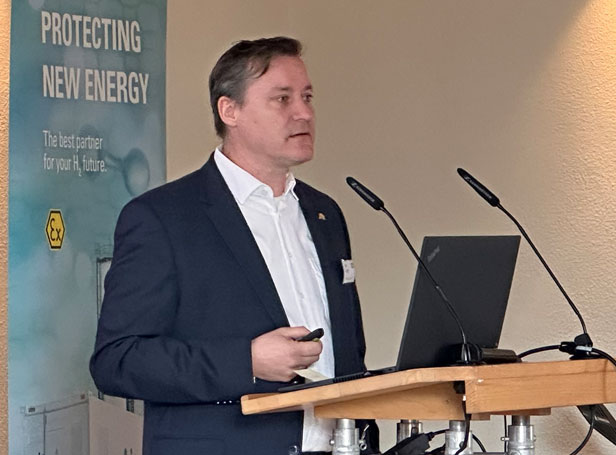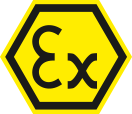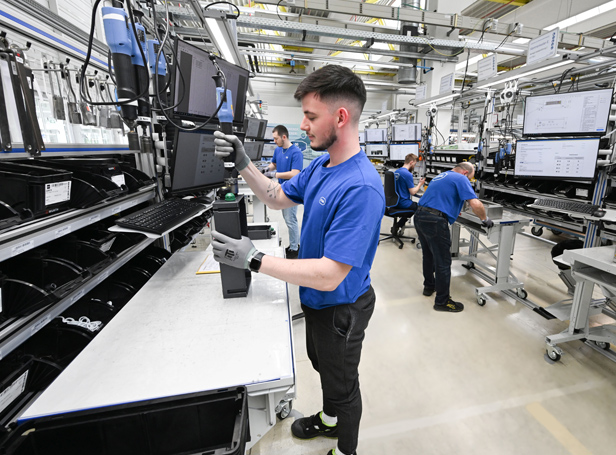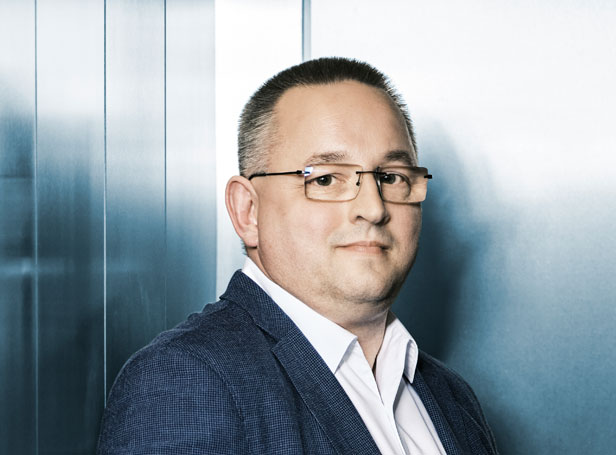Good lighting at workplaces: The 5 golden rules for industry and hazardous areas
Whether on the factory floor, in a chemical plant or a logistics centre – good lighting doesn't come about by chance. It is the result of meticulous planning, technical ingenuity and unambiguous standards. Wherever machinery hums, forklifts are on the move and people are dedicating their full concentration to their work, proper lighting is a crucial factor in ensuring productivity, safety and well-being.
So that you're not left in the dark when designing the lighting system in industrial environments, we explain the 5 golden rules for good lighting – compact, practical and with R. STAHL's expertise.
1. Sufficient lighting – but the right kind!
The first rule is simple but crucial: Without sufficient lighting, it is not possible to work safely. It's not just about the light being "bright enough", but the right illuminance for the task at hand. DIN EN 12464-1 provides clear recommendations for this:
- 100 lx is sufficient for finding your way around in storage areas
- 300 lx is required for continuous work, for example when order picking
- 500 lx or higher is needed when details have to be discerned – for instance when assembling small components
Even more light may be necessary in sensitive areas like test stations or when handling hazardous substances. The illuminance should always be measured at the actual workplace and be adapted to individual requirements. Especially in industry, different activities are often performed in the same area. This area should be zoned – with the luminous intensity adapted to the different tasks. Nowadays, modern LED solutions are very easy to dim or intelligently control using sensors.
Practical tip 1: Sometimes the area to be lit is vertical rather than horizontal, like a wall or display instruments on a system. This has to be considered in the plans.
Practical tip 2: A lighting upgrade is recommended for older employees or for particularly difficult visual tasks – as more light = more safety = fewer mistakes.
2. Uniformity: Avoid islands of light and chasms of shadow
Another common mistake in old lighting concepts is extreme fluctuations in brightness. A bright spot here, a dark hallway there – this leads to fatigue, sensory overload and an increased risk of accidents. The result? A lack of concentration, uncertainty, poorer work.
This is why DIN EN 12464-1 calls for a specific illuminance distribution: The ratio of minimum illuminance to average illuminance should be at least 0.6 in indoor areas.
But what affects uniformity?
- The light distribution of the luminare
- The height and positioning of the light fitting
- The geometry of the room
- Reflective or light-absorbing surfaces
The art is to bring these components into harmony with each other. Modern LED light fittings provide the ideal conditions for this with the distribution of light over a large area and optimised lens technology.
Industry tip: Specific plans are needed for large rooms or zones where machinery is located – uniformity must still be ensured here despite obstacles. Especially when retrofitting in brownfield environments, it pays off to choose light fittings with optimised light focusing and a wide radiation angle.
To sum it up: Uniform doesn't mean boring – it means safe.
3. The right correlated colour temperature: Between comfort area and test station
Warm white, neutral white, cool white – it's more than a question of taste. The correlated colour temperature (CCT) impacts concentration, perception and general well-being. Even the circadian rhythm is affected by the CCT. In industrial work areas, what matters most is neutrality and consistency.
The three most important CCTs at a glance:
- 2700 K (warm white): Ideal for outdoor areas, also insect-friendly – important in the context of the German Insect Conservation Act
- 5000 K (neutral white): Standard for most indoor areas – pleasant without seeming cool
- 6500 K (daylight white): For test stations or inspection areas where colour fidelity and the ability to make out details matter
Don't forget the environmental aspect:
There is a trend for "environmentally sensitive lighting". In certain zones – for instance where the boundaries of the site border forests or rivers – CCTs of less than 3000 K are mandated or recommended. Companies who plan ahead safeguard themselves against future regulations today.
Important: Ensure consistency! Different CCTs in the same work area look disjointed and irritating. With modern LED systems, CCTs can be controlled uniformly or even dynamically on request.
4. Minimal glare – seeing instead of squinting
Glare is a risk factor that is often underestimated. If you're constantly exposed to glare, your concentration will suffer, you will fatigue quicker and you will make mistakes. Unwanted reflections and direct glare can even cause accidents.
Causes of glare:
- Light sources in the field of view
- Reflections on shiny surfaces (machinery, steel, glass, monitors)
- Excessively high luminance of direct light sources illuminating a small surface
Modern light fitting manufacturers like R. STAHL offer different types of lens covers for light fittings to ensure the best light quality depending on the installation situation. Especially with low ceilings or in staircases, the use of diffuse, sandblasted covers is recommended – these disperse the light and prevent harsh beams of light.
An anti-glare design means:
- Keeping the UGR value (unified glare rating) in mind
- Aiming the light fittings effectively
- Making clever use of indirect light and reflective surfaces
Planning tip: Also take reflective surfaces, machine parts or monitor workstations into consideration – as even a perfectly positioned light fitting can be distracting if reflections occur.
5. Minimal shadow effect – a clear view of what matters
Shadows aren't just a visual problem – they get in the way of work. If you reach through a machine and only see one side illuminated, it will be difficult or even impossible to make out the details. This can even be life-threatening in practice: When performing repairs, when reaching into rotating parts or when detecting faults.
What helps prevent the shadow effect?
- Multiple points of light instead of individual powerful light fittings
- Large light-emitting surfaces
- Indirect light
- Installation against the objects which create shadows (e. g. machines, supports)
Installation tip: At a low installation height (< 3 m), light fittings with a large radiation angle and wide light distribution are recommended – this ensures less harsh shadows and a better view of what matters.
Extra rule: Safety through conformity to standards and emergency lighting
Industrial lighting doesn't stop at simple illumination. Emergency lighting – e.g. for escape and rescue routes – is required by law and must continue to work reliably even in the event of a power failure. DIN EN 1838 and ASR A3.4 stipulate that safety-relevant areas must be illuminated with at least 15 lx. Emergency lighting with a battery continues to work even in the event of a power failure and is monitored by automatic functional tests.
Conclusion: Good lighting can be planned – and saves money
Good lighting in industry doesn't come about by chance but is the result of conformity to standards, technical expertise and clever planning. By following the 5 golden rules for good lighting, you won't just create a safe and productive working environment, you'll also save costs in the long term through a lower energy consumption, reduced maintenance and improved employee satisfaction.
With its EXLUX PRO luminaires, R. STAHL not only offers solutions that conform to standards but are also future-proof for industrial and hazardous areas – from LED technology with 100,000 operating hours to smart DALI control.
These articles might also interest you







![[Translate to Englisch:] [Translate to Englisch:]](/fileadmin/user_upload/mitarbeiter/01_DE/07_Blog/00_Allgemein/blog-explosionsschutz-rstahl-startseite-279x205.jpg)
![[Translate to Englisch:] [Translate to Englisch:]](/fileadmin/user_upload/mitarbeiter/01_DE/07_Blog/00_Allgemein/blog-explosionsschutz-rstahl-ueber-den-blog-279x205.jpg)
![[Translate to Englisch:] [Translate to Englisch:]](/fileadmin/user_upload/mitarbeiter/01_DE/07_Blog/00_Allgemein/blog-explosionsschutz-rstahl-autoren-279x205.jpg)
![[Translate to Englisch:] [Translate to Englisch:]](/fileadmin/user_upload/mitarbeiter/01_DE/07_Blog/00_Allgemein/blog-explosionsschutz-rstahl-newsletter-expert-mail-279x205.jpg)
Write new comment